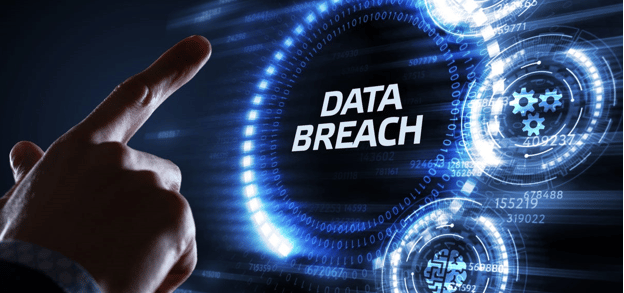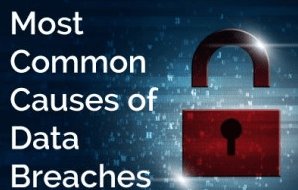What is a Data Breach?

A data breach refers to an incident where sensitive, confidential, or protected information is accessed by an unauthorized person. The data files in the breach are accessed without the permission of the owner. Anyone can suffer a data breach, including individuals, companies, and governments. An unprotected individual can put others at risk of a data breach.
Weaknesses in technology and user behavior are the most common causes of data breaches. As computers and handheld devices develop more connectivity, the number of places where data can slip through increases. New technologies are being invented without proper mechanisms to protect them against data breach attacks. IoT devices are also great proof that humans value convenience over security. The consequences of data breach can affect your finances or reputation forever.
What is the NFT Data Breach?

NFTs (Non-Fungible Tokens) are digital assets that run on the blockchain. They represent the ownership of real-life assets such as audio, videos, photos, memes, tweets, and even real estate. NFTs are created, bought, and sold on NFT marketplaces. Examples of NFT marketplaces include OpenSea, Rarible, Foundation, and SuperRare.
NFTs and NFT marketplaces are not immune from suffering a data breach.
So, what is an NFT data breach?
NFTs are bought using cryptocurrencies. Cryptocurrencies were meant to provide users with anonymity by not tying them to any transactions. The nature of NFTs means that they can undermine this. NFTs are unique and identifiable tokens. NFTs cannot be duplicated or reproduced.
If a user connects an NFT to any of their online identity, such as by using an NFT as a profile picture on social media, they could be exposing themselves to a data breach. It will become easy for a malicious user to find out what else their crypto wallet is associated with. If the crypto wallet is not well secured, the owner’s private data could be exposed to a data breach.
What is the Leading Cause of Data Breaches?

Many believe that a data breach is caused by an external hacker, but that is not always the case. A data breach can result from an intentional attack. However, a data breach can result from flaws within a company’s infrastructure or oversight by individuals.
The following are some of the most common causes of data breaches:
#1: An accidental insider
For example, an employee may use a coworker’s computer to access and read files with no proper authorization permissions. No data may be shared, but since it was accessed by an unauthorized individual, it is considered a data breach.
#2: A malicious insider
A person may intentionally access or share data that belongs to a company or individual to cause harm. Although the person may have the necessary permission to access the data, the intention could be to use the data in a nefarious way. The person or the company will feel the impact of data breach.
#3: Malicious outside criminals
Hackers may use attack vectors to access data from an individual or data in transit over the network.
#4: Stolen or lost devices
A lost device such as an unencrypted external hard disk or an unlocked laptop can lead to a data breach if the data in it is accessed and the owner will face the consequences of data breach.
How to Prevent Data Breach
With cases of data breaches involving unique artworks continuing to rise, digitalization can be the solution. Traditional forms of art are traded with the understanding that the buyer will become the new owner of the copyright. This is different from NFTs since the copyright remains with the original creator of the artwork. Thus, NFTs can provide a way how to prevent a data breach.
Consider the following example.
If you sell your piece of artwork to a museum, you will most likely be required to sign a contract and transfer the ownership of the artwork. With NFTs, you will only sell the digital version of the media that is connected to the NFT, but you will have all the rights to publish, recreate, and sell copies of the artwork provided the copies are not NFTs.
Remember that NFTs run on the blockchain, the digital ledger of public records. This makes it impossible for anyone to duplicate or reproduce an NFT, thus, a data breach may not be possible.
NFTs also facilitate traceability, which can in turn save an artist from experiencing the impact of data breach. If an NFT certificate is used together with a blockchain-based identifier, it’s possible to retrieve the records directly from the ledger of the underlying asset. It is similar to having two pieces of paper that prove that you are the owner of something. This makes it easy to know the previous owners of an NFT. It also becomes easy to see the list of contributors. Thus, the digitalization of unique artworks can save artists from suffering a data breach.
